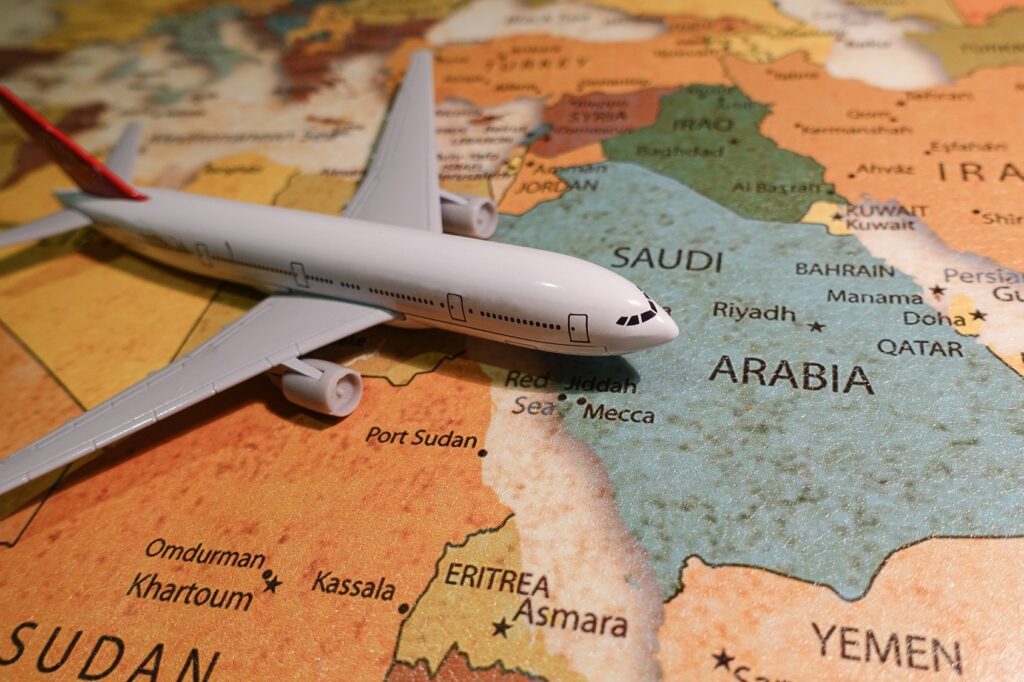The Saudi Arabian Public Investment Fund (PIF) and the country’s Crown Prince Mohammad bin Salman bin Abdulaziz, who is also the PIF’s chairman, have announced that the country will launch a new airline, Riyadh Air.
Riyadh Air will be based in Riyadh, Saudi Arabia, where the country’s other flag carrier, SAUDIA, has a hub at King Khalid International Airport (RUH). The PIF said that the new airline will fly to more than 100 destinations across the globe by 2030 but gave no indication about its fleet. The local government also announced a plan to establish a new airport in November 2022, King Salman International Airport, in the city, which will replace RUH while utilizing some of the current terminals at the airport.
Airbus or Boeing for Riyadh Air?
However, according to the Wall Street Journal (WSJ), which cited people familiar with the matter, the fund is looking to secure an order with Boeing worth up to $35 billion.
The order would include a mix of narrow-body and wide-body jets, with 100 aircraft or more eyed by the PIF and Riyadh Air. Previously, it was rumored that the new Saudi Arabian airline was looking to acquire up to 40 Airbus A350s and the WSJ report noted that both Airbus and Boeing have been competing for a deal from the RUH-based carrier.
Riyadh Air will be led by Yasir Al-Rumayyan, the current governor of the PIF and the upcoming Chairman of the airline. Al-Rumayyan will be joined by Tony Douglas, the former chief executive officer (CEO) of Etihad Airways, where the British executive worked between 2018 and 2022. In January 2023, local media reported that Douglas was no longer the CEO of the then-yet-to-be-announced airline. However, the PIF confirmed on March 12, 2023, that Douglas would be at the helm of the carrier.
Other senior management will include Saudi and international executives, per the PIF.
Leveraging Saudi Arabia’s geographical position
While there are quite a few Gulf-based airlines that have connected passengers between Africa, Asia, and Europe, Saudi Arabia aims to also leverage its position between these three continents to attract travelers onboard the new airline.
“The new national carrier will leverage Saudi Arabia’s strategic geographic location between the three continents of Asia, Africa, and Europe, enabling Riyadh to become a gateway to the world and a global destination for transportation, trade, and tourism,” read the PIF’s announcement. According to the fund’s estimates, Riyadh Air should add up to $20 billion to non-oil General Domestic Product (GDP) and create more than 200,000 direct and indirect jobs. The new airline will “benefit from PIF’s investment expertise and financial capabilities while expanding on the company’s operations to become a leading national carrier,” the PIF continued.
The establishment of the airline is part of the Saudi Arabian government’s Vision 2030 plan, a strategic initiative for the country to diversify its economy from oil and other natural resources revenues. Part of the plan is to develop the local aviation industry and to make it into a global competitor.
The new airport will also be in Riyadh, with the PIF planning to build King Salman International Airport on the same grounds as RUH. The new airport, announced by bin Salman in November 2022, aims to “boost Riyadh’s position as a global logistics hub, stimulate transport, trade and tourism, and act as a bridge linking the East with the West”. Much like Riyadh Air, the project is related to Vision 2030, with the government estimating that the new airport would “contribute 27 billion Saudi riyals [$7.1 billion – ed. note] annually to non-oil GDP and to create 103,000 direct and indirect jobs, in line with Vision 2030 objectives”.
The government, with the help of the airport, wants to “transform Riyadh to be among the top ten city economies in the world and to support the growth of Riyadh’s population to 15–20 million people by 2030”. Expected to be one of the largest airports in the world, it will boast six parallel runways and have the capacity to welcome 120 million travelers by 2030, with the number rising to 185 million by 2050.
According to a page on RUH’s website, which was last updated on February 17, 2022, the airport serves “more than 28.5 million passengers a year”.

